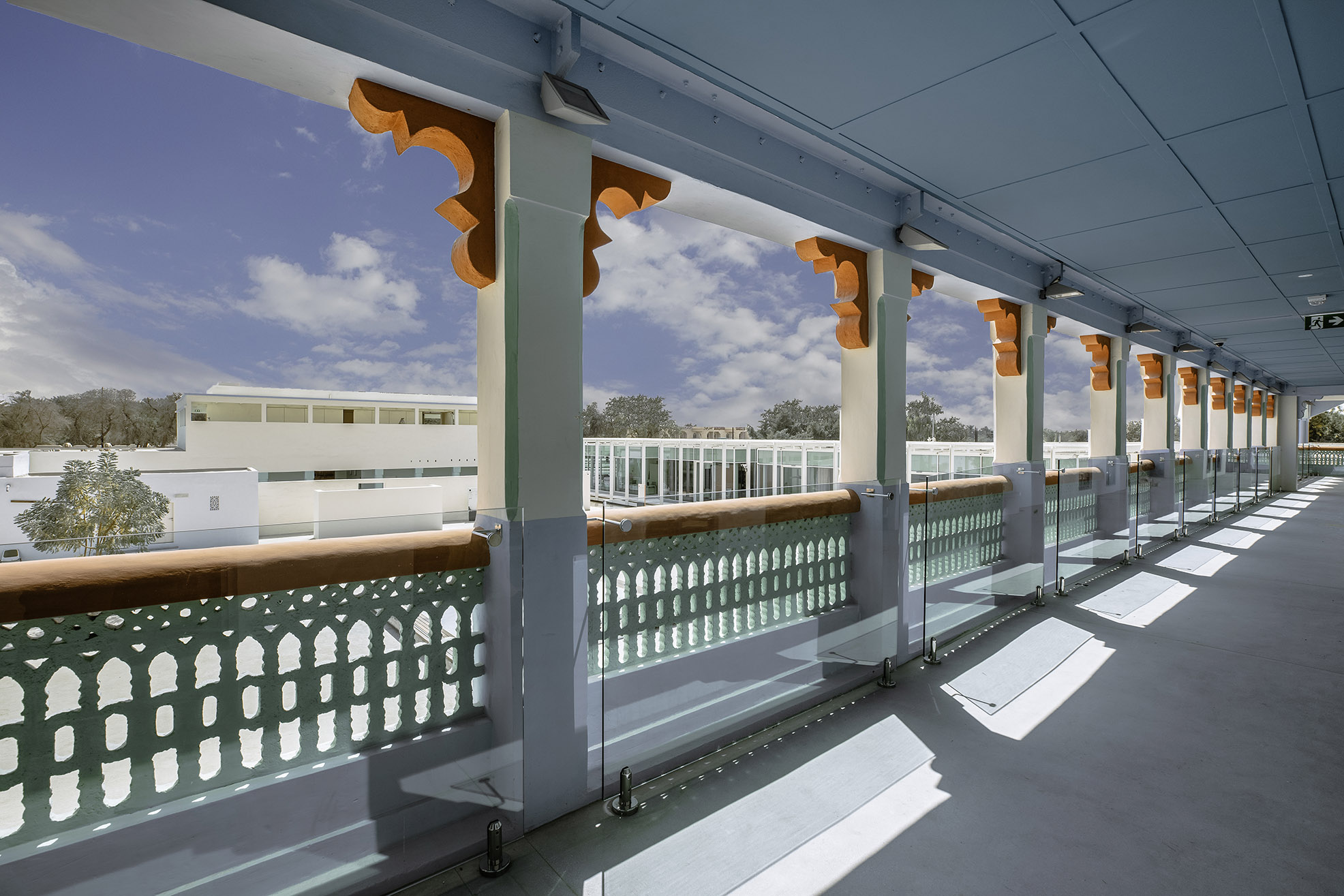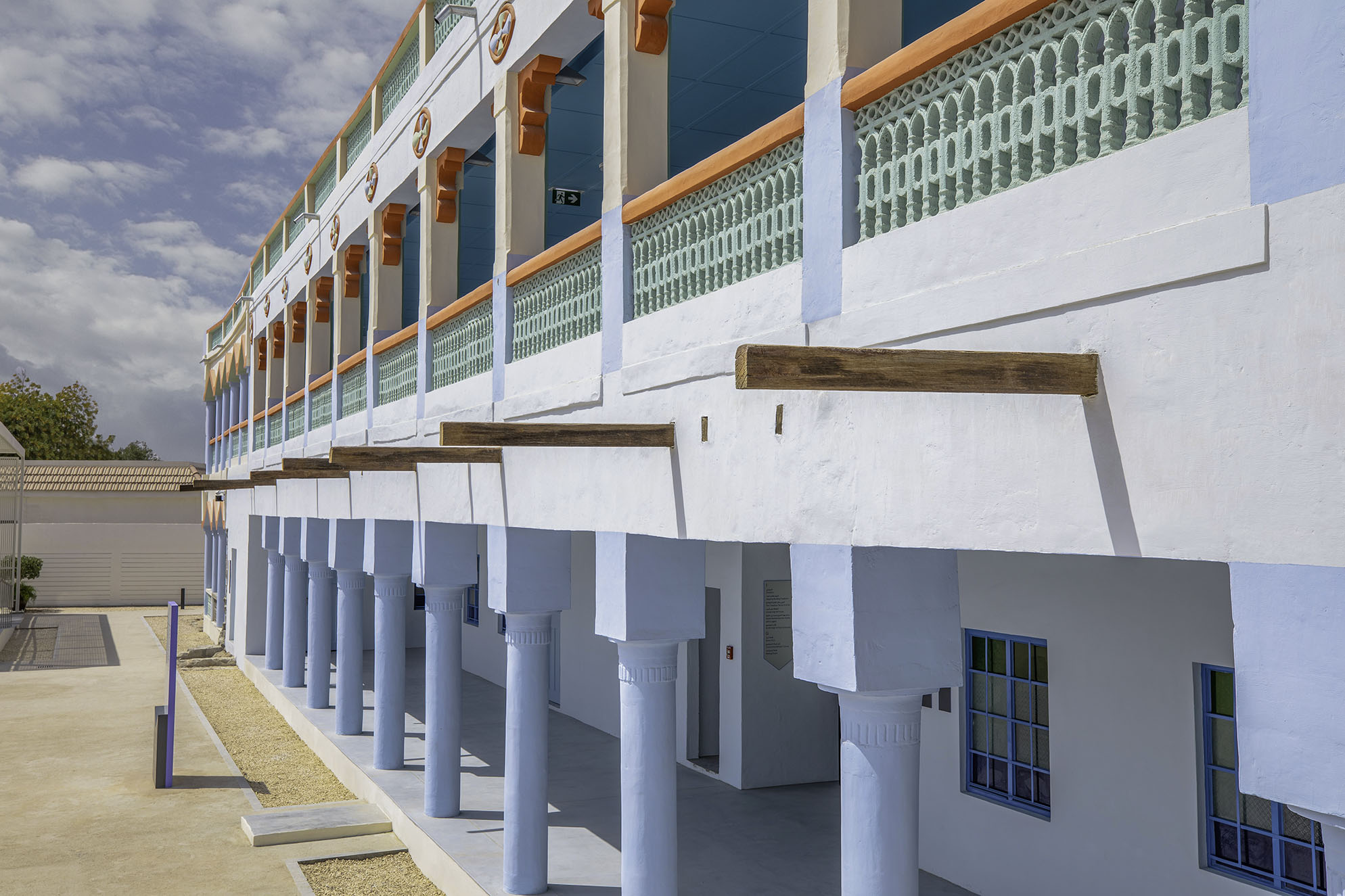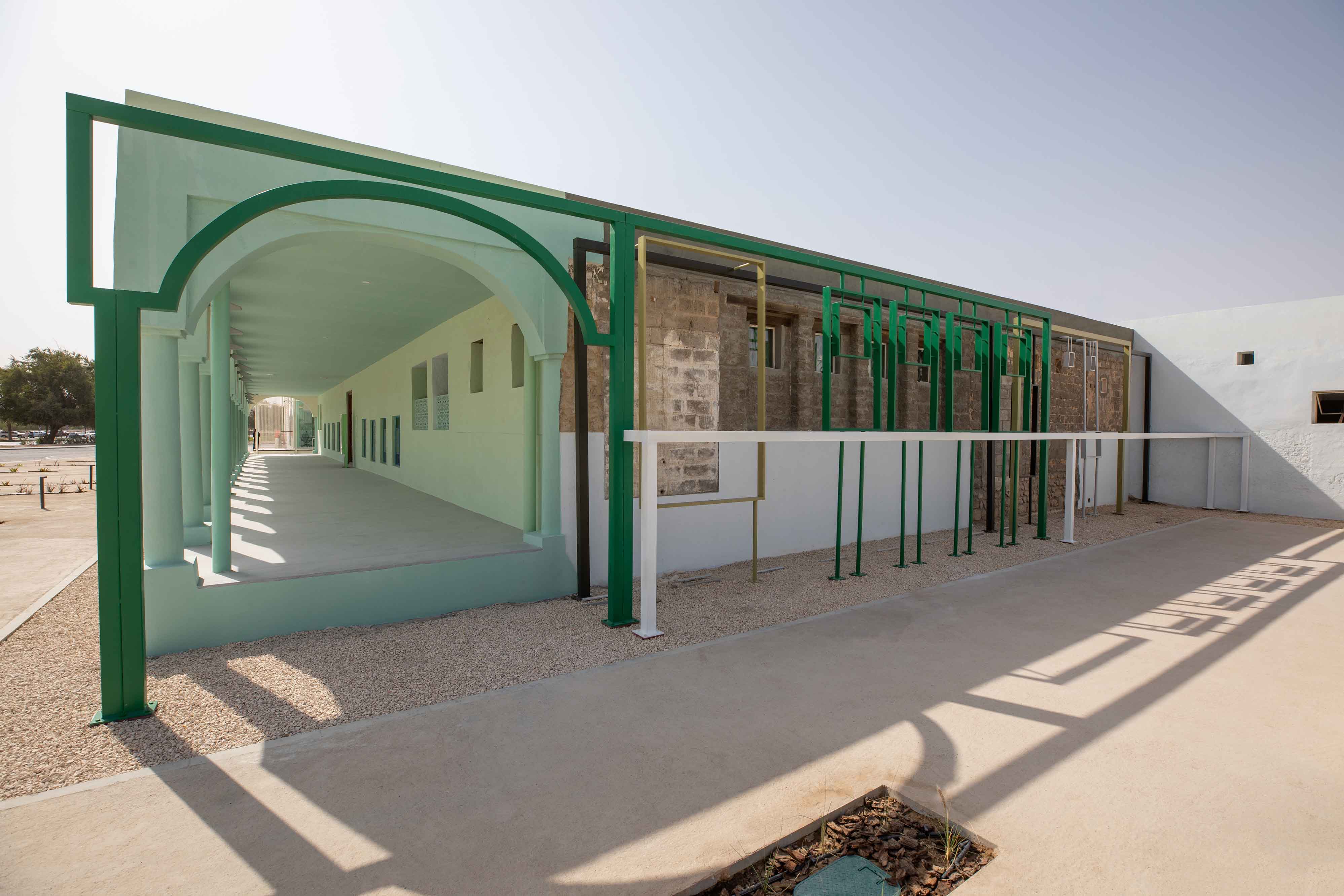The House
The opening of Bait Mohammed bin Khalifa follows an extensive conservation programme in which the historic home was repaired, restored and rehabilitated into a community centre. The House has been adapted to include spaces for hire by the public, for workshops, performances, meetings and social gatherings.
test

Our Story
Built in 1958, the House was home to Sheikh Mohammed bin Khalifa bin Zayed Al Nahyan (1909–79), the father-in-law of the late Sheikh Zayed bin Sultan Al Nahyan, Founding Father of the United Arab Emirates. It stood at the entrance of Al Ain and was among the first landmarks to greet travelers to the city from Abu Dhabi. The house was built at the height of the Transition Period (1930s60s), when hybrid architectural styles evolved as a result of the economic impact of oil exploration and discovery.
As the elder of the Al Nahyan family, the late Sheikh Mohammed bin Khalifa Al Nahyan was a discrete yet influential historical figure associated with important events in the history of Abu Dhabi and the United Arab Emirates. He was a central figure in Al Ain society and his house was at the heart of community gatherings. As an essential element to a culturally and historically rich neighbourhood, the House embodies a sense of place and the community’s sense of identity.

Our Mission
Serve the needs of the local community, by creating a unique social fabric and place of congregation to bring people together.

Our Vision
To be a vibrant cultural community centre that commemorates the late Sheikh Mohammed bin Khalifa Al Nahyan and highlights the urban Transition Period as a pivotal era in the history of Al Ain.

Our Values
To nurture the community centre with a deep respect for the history and culture which it embodies.

A core component of the World Heritage property ‘The Cultural Sites of Al Ain’
Bait Mohammed bin Khalifa is a core component of the UNESCO World Heritage-listed Cultural Sites of Al Ain. It provides insight into the changing social, architectural and urban transformation of Al Ain during its transition to modernity. As such it is a key chapter in the World Heritage Site narrative.
The House complements and enhances the presentation and understanding of the World Heritage Site, linking the pre-oil history and heritage of Al Ain with the present day.
Privacy Policy
We value your privacy. Please review our Privacy Policy to understand how we handle your data.
Your privacy is important to us. We use cookies and collect data to improve your experience...




